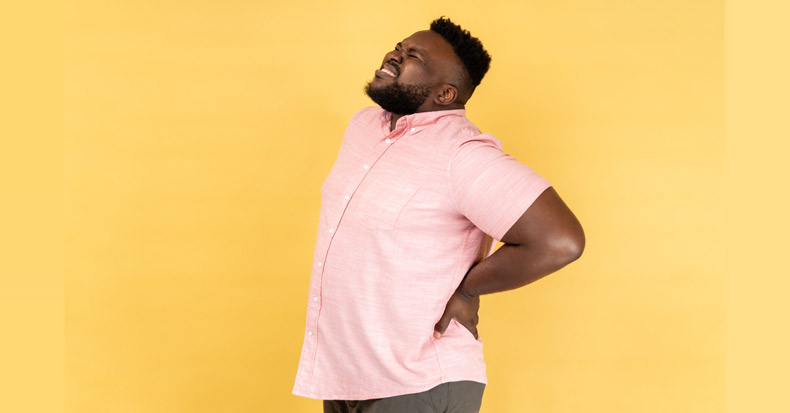Among the roles the hip joints play in the human body, perhaps none is as important as the ability to perform everyday activities like standing, walking, and running. Of course, these actions involve multiple other body parts, so it’s no surprise that when a patient presents with hip pain, they often have additional issues. In fact, a study published in 2019 reported that among a group of 2,515 patients with hip pain, only 3% exclusively had hip pain. Of the remaining 97%, more than half had pain in at least six body sites! Due to the close proximity of the hips and lower back, as well as the roles they play in maintaining posture while performing activities like walking, it’s no surprise there’s a link between hip pain and lower back pain.
In 2024, a team of researchers from Brazil’s University of Sao Paulo reviewed findings from 54 studies with respect to the relationship between low back pain and hip function, specifically looking at factors like kinematics, range of motion, strength, and muscle activity. They concluded that patients with low back pain exhibit a significant reduction in hip range of motion, especially hip internal rotation; greater activation of the hamstrings and gluteus maximus (hip extensor) muscles and weakness of the hip abductor and extensor muscles during functional activities; and differences in performance on essential activities like sitting, standing, and walking. Another systematic review and meta-analysis looked specifically at walking ability in patients with either acute or chronic low back pain. The authors concluded that when compared to back-healthy individuals, those with low back pain walked slower and with a shorter stride, exhibiting differences in coordination between the upper back, lower back, and hips/pelvis.
However, it’s unclear if an existing hip condition can trigger these changes, or if consequences of low back pain are leading to hip problems. The relationship between low back pain and hip pain may even be bidirectional; that is, one raises the risk for the other. For example, a 2021 study of patients with both conditions found that treating the lower back resolved concurring hip pain in a group of 76 patients. However, a 2024 study revealed that of 34 patients with osteoarthritis of the hip, 19 also had moderate-to-severe low back pain and 14 experienced improvements in their low back pain after undergoing treatment to address their hip condition.
This is why it’s important to examine the whole patient and not just focus on the area of chief complaint. Often, the underlying cause or at least a contributing factor for a patient’s present pain and disability may be an issue in an adjacent part of the body. The good news is that this is the approach doctors of chiropractic are trained to use when examining a patient, and they’re well-equipped to address both hip pain and low back pain using conservative treatment options including manual therapies and specific exercises.
